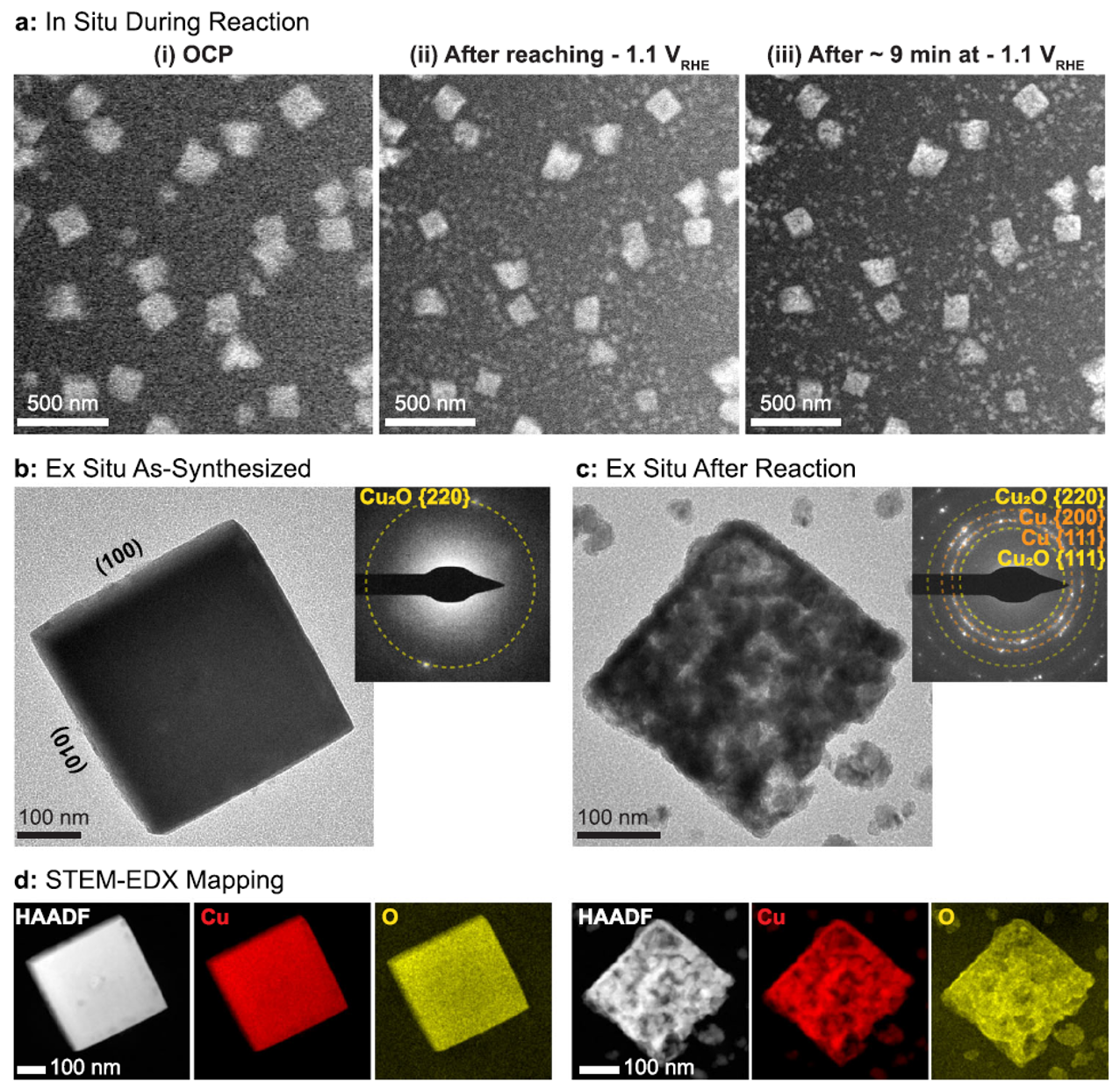How does electrochemical reduction affect the structure and chemistry of catalysts?
Philipp Grosse, Aram Yoon, See Wee Chee and Beatriz Roldan Cuenya, and their colleagues at the Fritz-Haber Institute of the Max Planck Society combined ex-situ benchtop electrochemistry with in-situ electrochemical transmission electron microscopy (EC-TEM) and ex-situ STEM-EDS using their Hummingbird Scientific in-situ TEM liquid cell sample holder, and Hummingbird Scientific single-tilt tomography holder. Both TEM holders are part of a comprehensive suite of Hummingbird TEM holders aimed at characterization of electrochemical processes.

Figures showing morphology of Cu2O cubes and their evolution during CO2 reduction reaction. a) Morphological changes observed in ~170 nm cubes after (i) introducing CO2 saturated 0.1M KHCO3 under open circuit potential, (ii) while applying a reductive potential of −1.1 VRHE and (iii) after ~9 min at −1.1 VRHE. Comparison of Cu2O cubes b) before and c) after reaction using ex situ TEM. d) STEM-EDX maps showing the Cu and O signals. Copyright © 2021 Springer Nature Limited
In-situ EC-TEM experiments performed using the Hummingbird Scientific liquid electrochemistry holder enabled real-time visualization of Cl–-stabilized Cu2O nanocube catalyst fragmentation and nanoparticle redeposition under CO2 reduction reaction (CO2RR) conditions. Ex-situ TEM imaging and STEM-EDS analysis performed after reaction completion using the ultra stable tomography holder supplemented the particle dynamics revealed by the in-situ work. While the liquid holder has suitable clearance for EDS signal collection, inherent limitations of imaging resolution and spectroscopy in any liquid cell favored a more highly detailed postmortem characterization. EDS maps in the tomography holder reveal chemical evolution that is often obscured –via both the x-ray signal and e-beam resolution– by the solution. In this case decreases in both O and Cl signatures after reaction are observed. Overall, this work exemplifies the unique insights into nanomaterial synthesis and catalysis that can be gained with an integrated electron microscopy workflow.
Reference: Philipp Grosse, Aram Yoon, Clara Rettenmaier, Antonia Herzog, See Wee Chee, and Beatriz Roldan Cuenya, Nature Communications 12 6736 (2021) DOI: 10.1038/s41467-021-26743-5
Full paper Copyright © 2021 Springer Nature Limited
View All News

